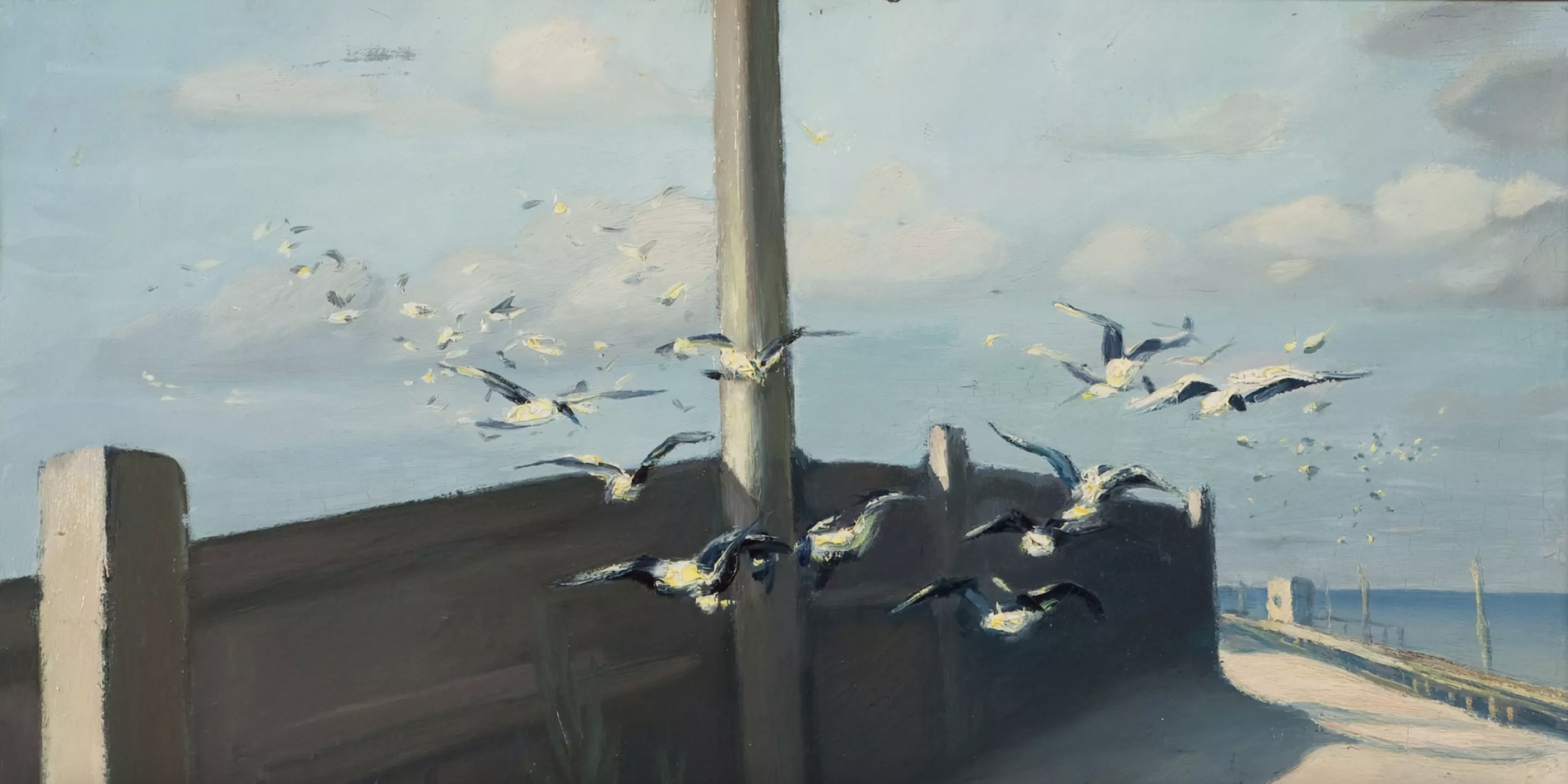She took individual lessons with pedagogue Ansis Stunda as a particularly promising student. “I no longer had free time – ever. But neither did I want it”, Delle writes in her autobiography (2007). After two years of studies at the Art Academy of Latvia under Konrāds Ubāns, she left the university. The young artist found support among the beatniks in cafe Kaza. “After Stunda, this was my second university”. Yet since 1967, Biruta Delle’s paintings are admitted to exhibitions, subsequently also acquired for the collections of the Artists’ Union of Latvia and the Latvian National Museum of Art.
During the Soviet period, Delle lives as though in two parallel worlds – both on the official exhibition circuit and in an idealistic environment of mutual assistance that brings together a variety of outsiders, while her art undoubtedly remains in focus. “I subjected the entire family to my painting. I felt no guilt, since I have never perceived myself as a woman – as a mother or wife. I have always been a painter who has had to perform the duties of a woman.”
Delle is very productive, she realises daring projects – she sets up ateliers far from Riga, works with students in an informal studio – yet much of what is created in this manner is lost or destroyed. Her art likewise encompasses two directions – fanatic studies of nature and the outdoors, focusing particularly on the relationships between areas of sunlight and shade, but also ambitious multi-figure compositions that demonstrate vivid imagination. While art historians see surrealistic elements in Delle’s works, she is linked to this movement rather by the practice of automatic sketching than the formal attributes of her works.
The artist has talked publicly about the complications of her personal life – episodes of depression, the use of medication, mental disturbances and a conflict among her nearest and dearest which in 1993 has a lethal result. Also, about the difficult path of overcoming the crisis, along which the artist is helped by meditation, conversations with a priest and – work. “These conversations had on me the effect of an oath: to paint every day.”
With enviable regularity Biruta Delle continues to hold solo exhibitions of her latest works, her paintings are held in the largest national collections and owned by the many appreciators of her talent.
The exhibition will present Biruta Delle’s most popular, frequently-reproduced figurative compositions as well as landscapes from the Latvian National Museum of Art, the Museum of the Artists’ Union of Latvia, Zuzeum Art Centre and private collections.
*Biruta Delle. Mazirbe. 1979. Oil on canvas. Collection of the Latvian National Museum of Art, Riga. Photo: Didzis Grodzs





